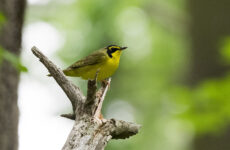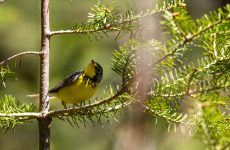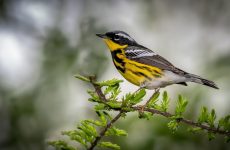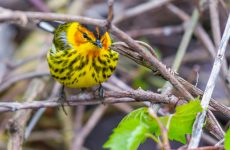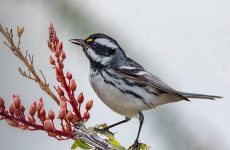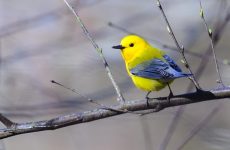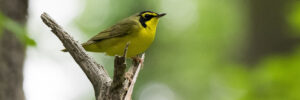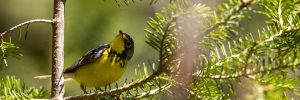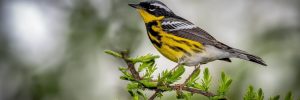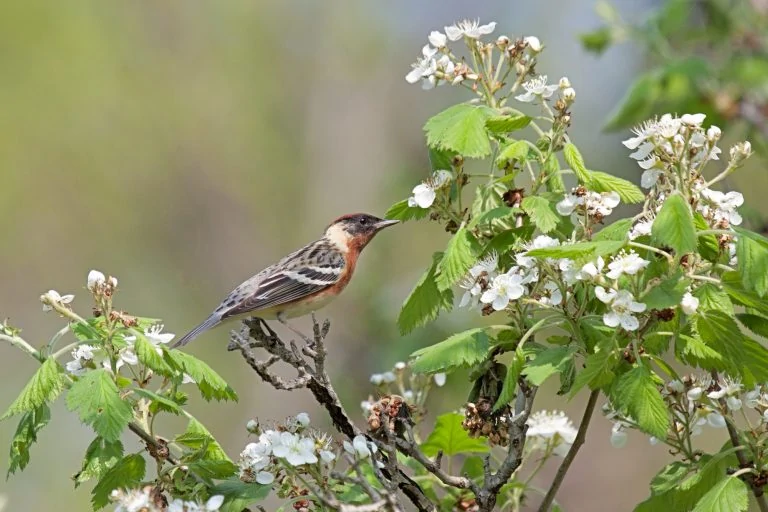
Bay-breasted Warbler males are gray and black-streaked on the back and have reddish-brown crowns and breasts. They are white underneath and have black faces with a white patch behind their faces.
However, they are different colors during the breeding season than after the fall molt, and they look similar to Blackpoll Warblers in the fall.
Female Bay-breasted Warblers are similar but with less reddish-brown coloring and no black on the face when in breeding plumage. Non-breeding females and juveniles have yellowish-green heads, necks, and upper backs.
- Setophaga castanea
- Length: 5.5 in (14 cm)
- Weight: 0.3-0.6 oz (10-17 g)
- Wingspan: 7.9-8.7 in (20-22 cm)
Range
Bay-breasted Warblers breed in Canada and can be seen over eastern US states during the migration. They spend the winter in South America.
Habitat And Diet
You can find Bay-breasted Warblers mostly in spruce and fir forests in the breeding season, eating spruce budworm, but they can be seen in any forest type during migration. In winter, they also eat berries.
Bay-breasted Warblers’ Song:
Nests
Nests of Bay-breasted Warblers are built mainly by females on lower branches of spruce or fir trees. They use twigs and bark with dried grass, woven in and held together with spider silk. They lay up to seven eggs.
Fun Fact:
Bay-breasted Warblers can consume over 10,000 budworms per hectare in around 40 days, and there are more nests in budworm outbreak areas.

